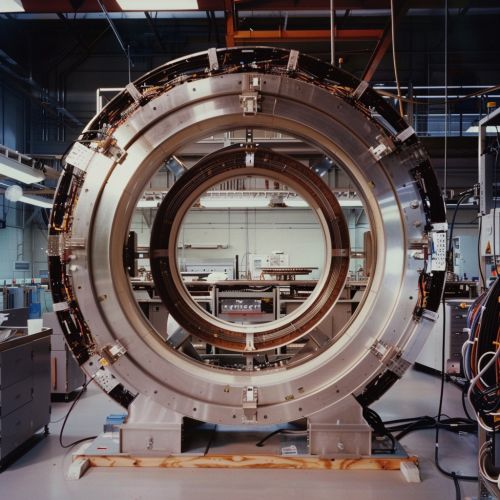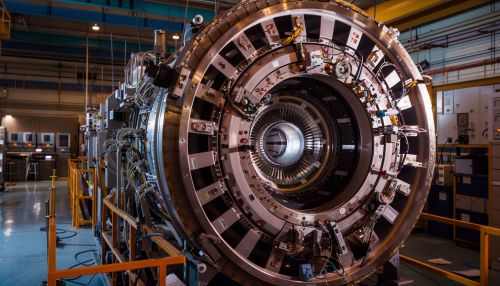Cyclotron
Introduction
A Cyclotron is a type of particle accelerator invented by Ernest O. Lawrence in 1932 in which charged particles accelerate outwards from the center along a spiral path. The particles are held to a spiral trajectory by a static magnetic field and accelerated by a rapidly varying (radio frequency) electric field.
History
Ernest O. Lawrence conceived the principle of the cyclotron in 1929. The first successful tests were made in 1930 at the University of California, Berkeley. The first cyclotron was a mere 4 inches in diameter. Lawrence went on to build larger and larger machines, using higher and higher magnetic fields, and achieving higher and higher energies.
Operation
The cyclotron makes use of a high frequency alternating voltage to accelerate the particles. This voltage is applied across the "dees" of the cyclotron: two hollow "D"-shaped sheet metal electrodes located within a vacuum chamber between the poles of a large magnet.
Applications
Cyclotrons have many practical applications. They are used in nuclear medicine for the production of radionuclides for medical imaging and therapy. They are also used in scientific research, for example in particle physics to investigate the properties of subatomic particles.
Limitations
The cyclotron has limitations that have led to the development of other types of particle accelerators. One major limitation is that the maximum energy of the accelerated particles is limited by the size of the cyclotron.
See Also
Synchrotron Linear particle accelerator Betatron


